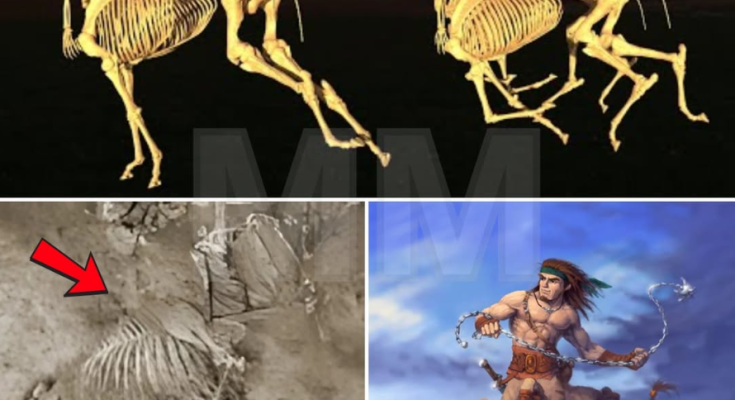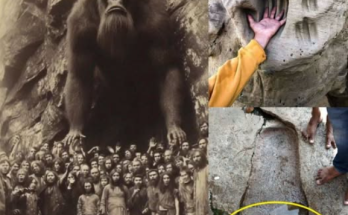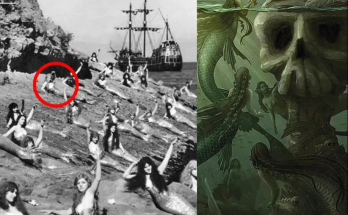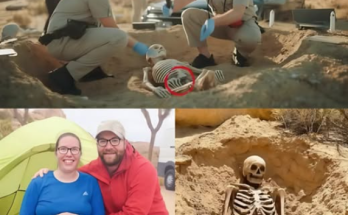In a jaw-dropping discovery that has sent shockwaves through the archaeological community, researchers in Greece have unearthed a skeleton unlike anything seen before—an extraordinary fusion of human and horse remains. Found buried deep within an ancient site, this astonishing find mirrors the legendary centaurs of Greek mythology, raising profound questions about the intersection of myth and reality.

The skeleton, which exhibits a seamless blend of human and equine bones, has left experts both fascinated and baffled. Archaeologists are grappling with the implications of this discovery: was this an intentional creation borne from ritual practices, a symbolic burial steeped in cultural significance, or perhaps evidence of something far stranger? Each possibility invites a multitude of interpretations, forcing historians to reassess long-accepted truths about ancient civilizations.
The centaur, a creature that has long been relegated to the realm of mythology, now presents a tantalizing connection to historical narratives. Could it be that such myths were rooted in actual beings or practices that existed in the distant past? The discovery ignites debates about the nature of human imagination and the ways in which cultures interpret the unknown. The notion that ancient peoples may have engaged in experimental practices—whether for religious, medicinal, or other purposes—adds a layer of complexity to our understanding of history.

As researchers meticulously analyze the skeleton, they are not only uncovering biological mysteries but also delving into the cultural significance of such a being. What does this hybrid figure reveal about the values, beliefs, and fears of the society that created it? The implications extend beyond mere curiosity, challenging our perceptions of identity and the boundaries between species.
This remarkable find could force us to rewrite the very origins of history. If rituals or experimentation involving human-animal hybrids were more common than previously thought, what other discoveries lie hidden beneath the sands of time? The potential for future revelations looms large, beckoning archaeologists to explore further and reveal more about ancient practices.

In conclusion, the discovery of the human-horse hybrid skeleton in Greece stands as a testament to the mysteries that continue to captivate our collective imagination. It challenges us to rethink the relationship between myth and reality, urging a deeper exploration of our past. As we confront the complexities of this find, we are reminded that history is often more intricate than we assume, inviting us to embrace both the known and the unknown in our quest for understanding.




